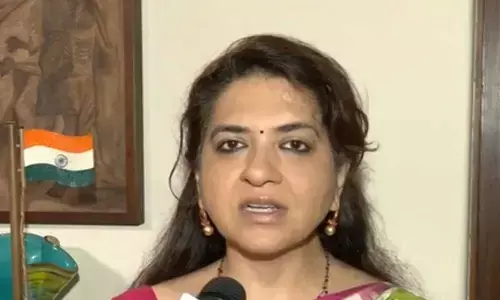The subtle art of credit price discovery

We must realise that credit ratings have limitations in terms of predicting credit cycle ups & downs. This phenomenon isn't limited to just India but is a global feature. The inability of the credit rating mechanism to adequately price in and predict the credit cycle implies that a multi-pronged approach is needed to ensure that the credit quality transmission mechanism works effectively
As India grapples with credit issues, one of the primary factors that needs analysis is the broken transmission mechanism that relays credit quality to market participants. In common parlance, the transmission mechanism that provides information regarding the credit quality of the borrower to the lenders is unable to do so efficiently. Recent news whereby credit downgrades have just preceded defaults by Non-Banking Financial Companies (NBFCs) is a case in point.
While the framework utilised by the rating agencies that has led to a delay in ratings relaying the correct credit information to market participants is partially to blame for the inefficacious credit transmission mechanism, issues around rating agencies are only part of the problem. For sure, rating agency regulations must be improved, but we must also realise that "credit market frameworks" are much more than ratings.
We must realise that credit ratings have limitations in terms of predicting credit cycle ups and downs. This phenomenon isn't limited to just India but is a global feature. The inability of the credit rating mechanism to adequately price in and predict the credit cycle implies that a multi-pronged approach is needed to ensure that the credit quality transmission mechanism works effectively. Essentially, India needs to develop other features of the credit market that will assist market participants in gauging credit quality, thereby reducing the risk of a "jump-to-default" scenario we have witnessed repeatedly over the last 12 months.
Indian policymakers need to start working on a framework that will allow a liquid and deep secondary market to develop in credit products. Credit products here refers to the entire universe of lending, including bonds, loans and other instruments. Market pricing of products and risk and therefore increased participation by investors will help in "price discovery" of the credit quality. Constant pricing of credit risk and the concomitant information and structure that entails will imply that lenders will have a better information set with which to make informed credit decisions.
A market that allows for secondary liquidity, albeit even small amounts to start with, will also incentivise borrowers to manage their credit profile better. More importantly, a secondary market for credit instruments will go a long way towards avoiding the bunching of credit as it happens in today's market. A credit market has a cycle, and without the existence of a robust secondary market, in expansionary credit cycles, poor quality credit gets excessive access to capital. On the contrary, once the credit cycle contracts credit access for all businesses is diminished to a great extent.
We must work towards breaking the above trend that has plagued the Indian economy significantly. A secondary market for credit instruments will incentivise both lenders and borrowers to behave in a way such that the entire available pool of credit goes towards the most optimal usage.
Policymakers also need to start utilising vehicles similar to Real Estate Investment Trusts (REITs) or Infrastructure Investment Trusts (InvITs) to allow for the pooling of credit instruments. While debt mutual funds exist in the market, the aim of the new "credit pooling vehicles" will be to enable institutional investors to access credit instruments across the spectrum, and not just limited to certain corporate bonds. Access to vehicles that allow for greater liquidity and transparency will go a long way in increasing the capital availability and investor participation in Indian credit markets.
As India looks to boost economic growth, it is essential to realise the credit interlinkages in the economy. To boost exports, a primary aim in India, credit access will be a vital component, if not the most important. If credit is constrained by inefficiencies in the credit information transmission mechanism and therefore leads to inefficient lending in the real estate sector, then it is essential to realise that not only is the real estate sector severely affected but so are other areas such as exports. Primarily, an improved credit framework will lead to both higher availability of capital and credit availability at more affordable rates.
Credit markets, like all businesses, will move in cycles. Indian policymakers must aim to start building on the blocks that will allow credit downturns to be less severe and shorter. The ability to provide the market access to better information and investment structures will go a long way in improving credit pricing, and thereby credit access. (IANS)















